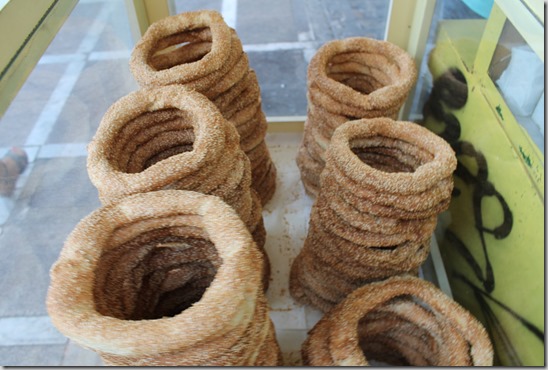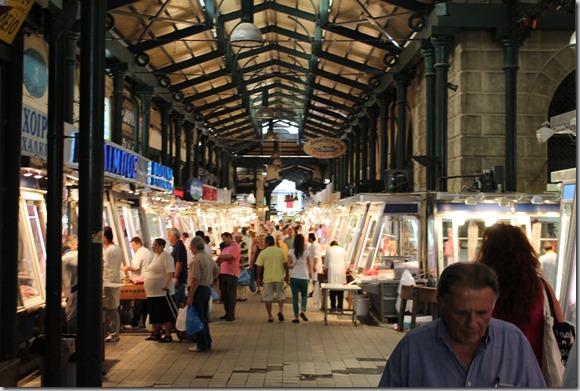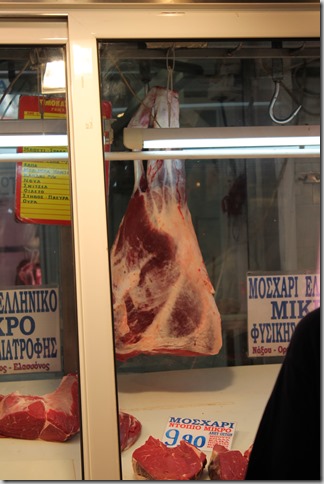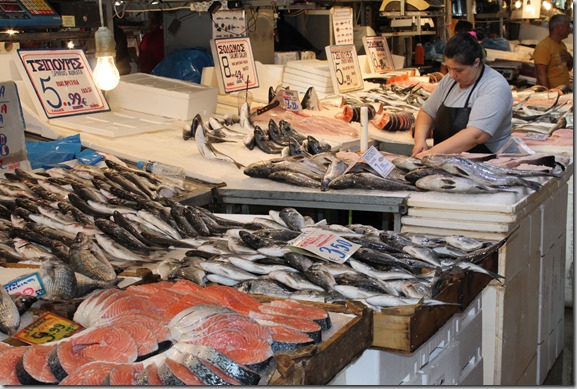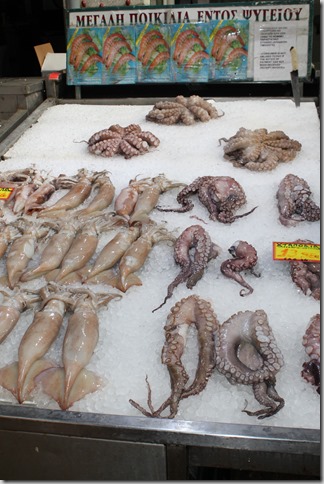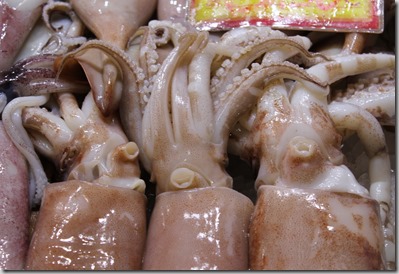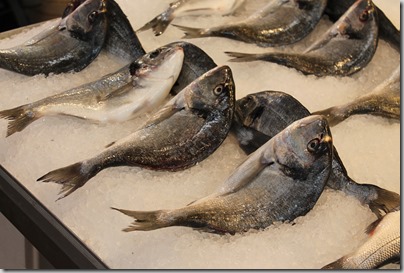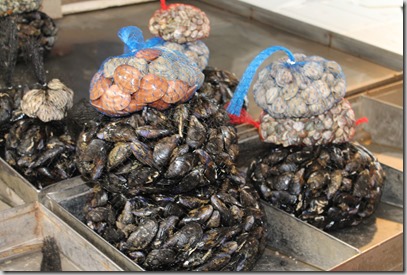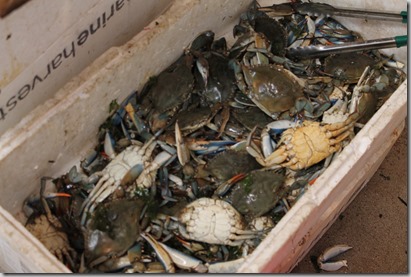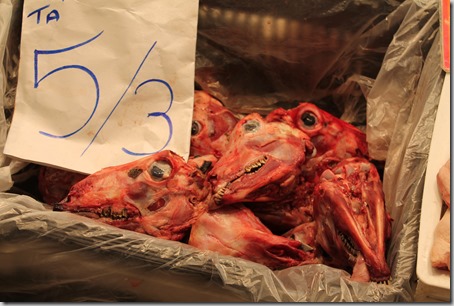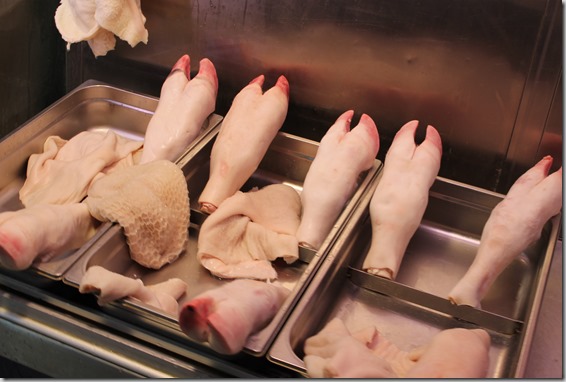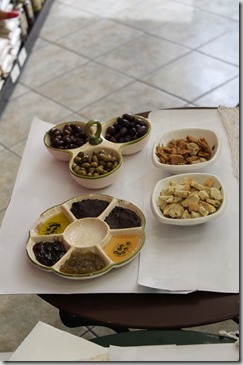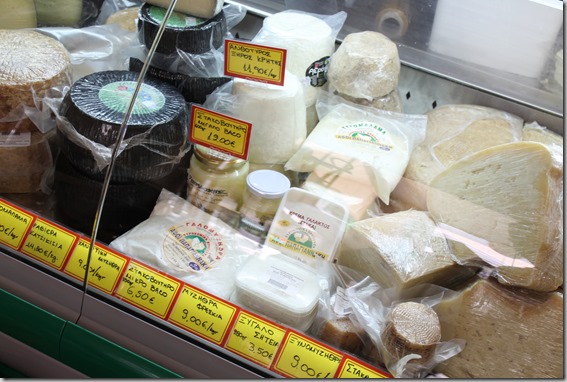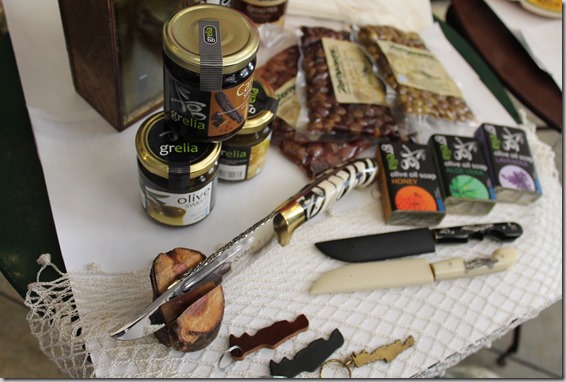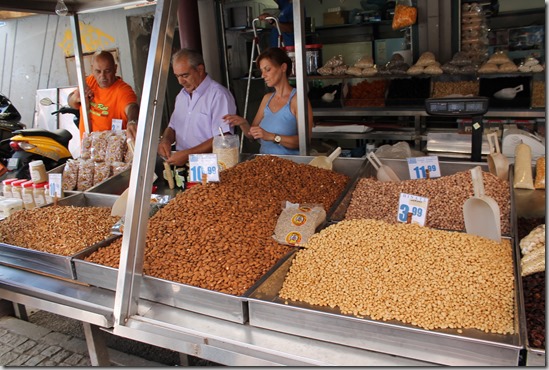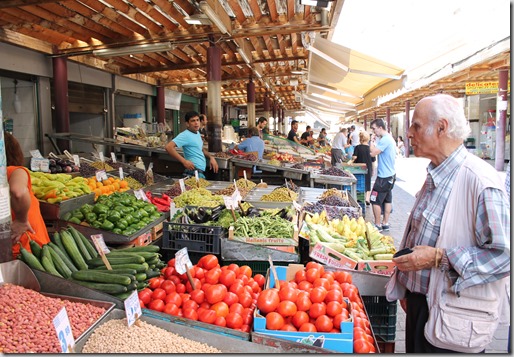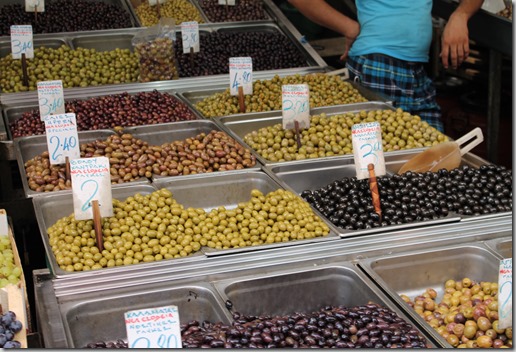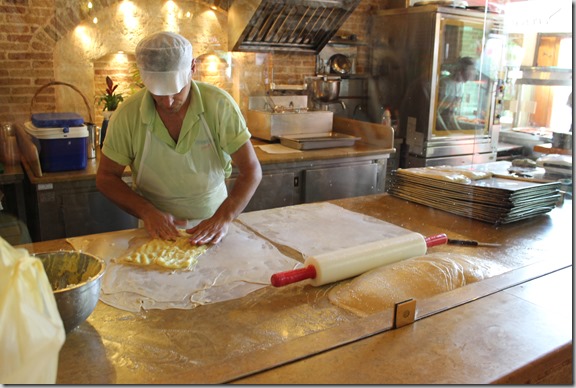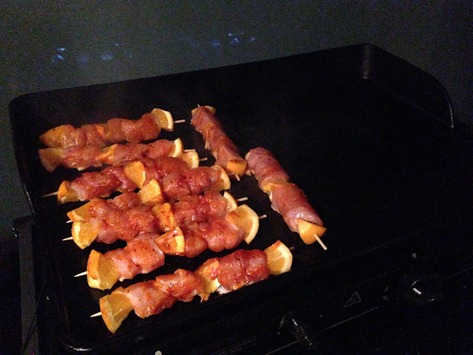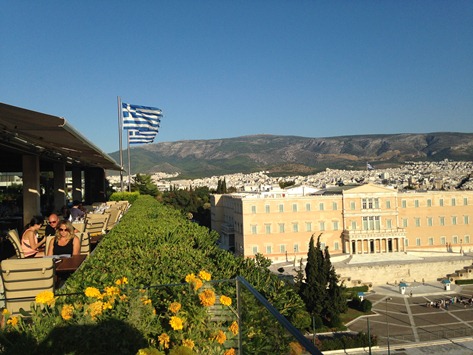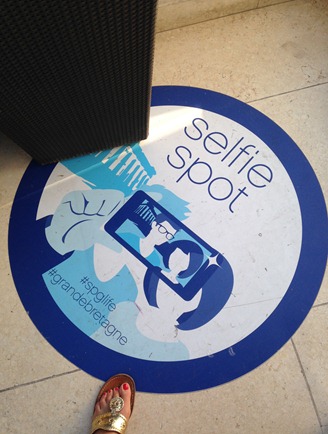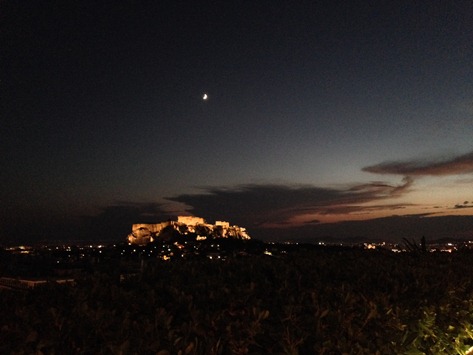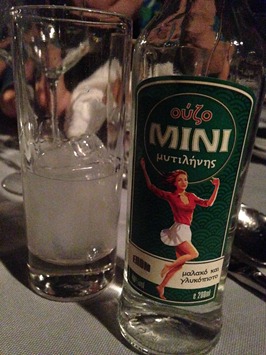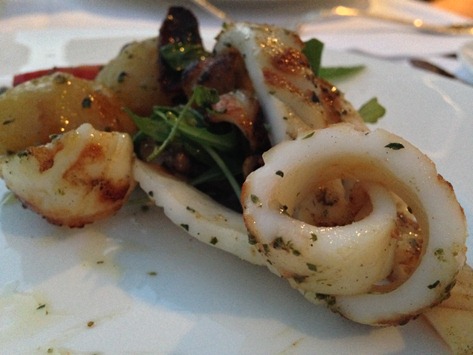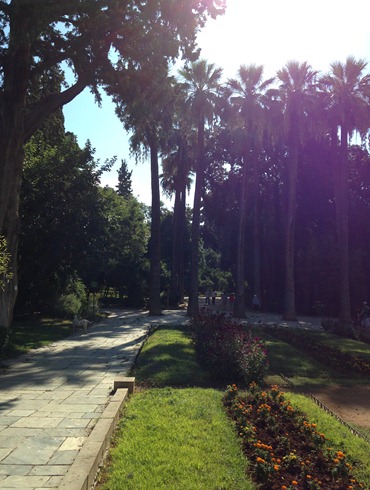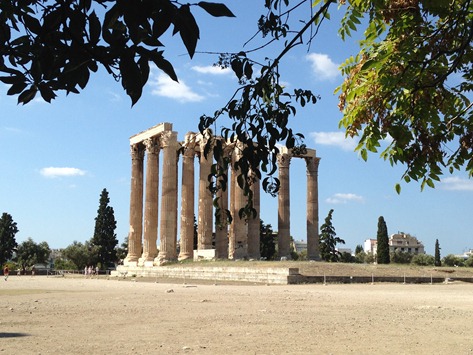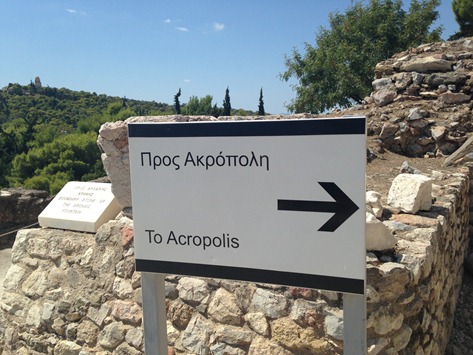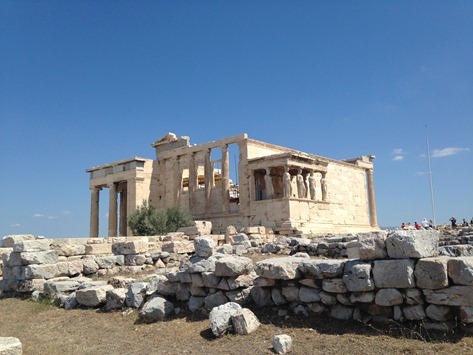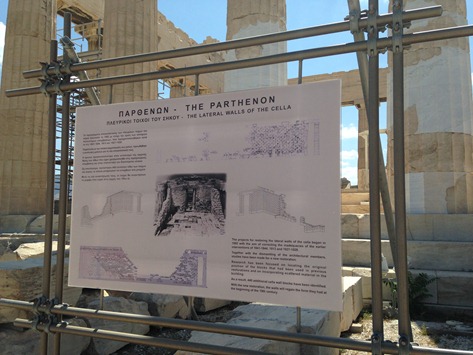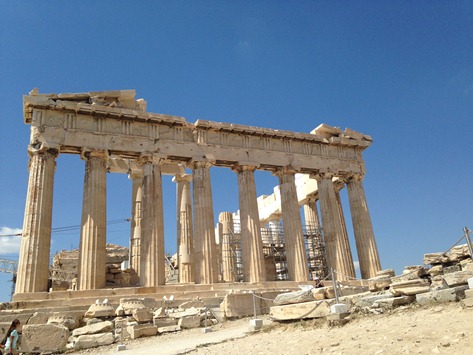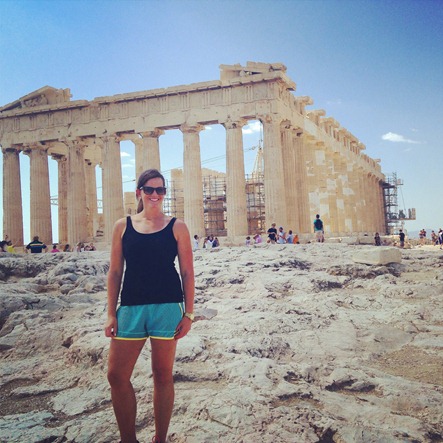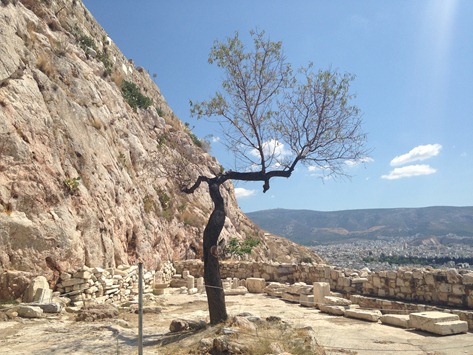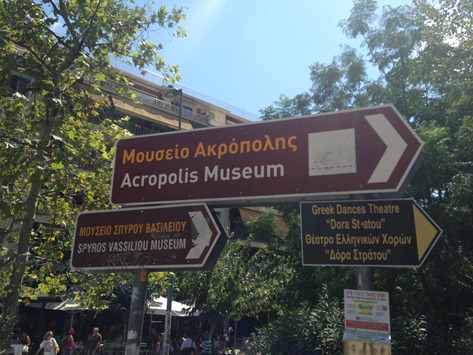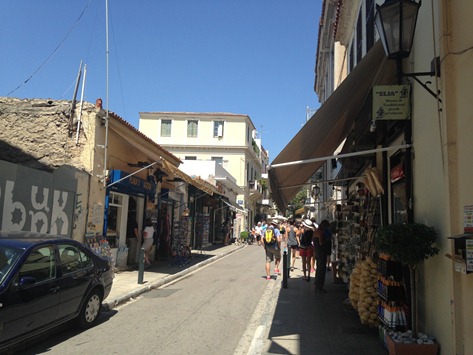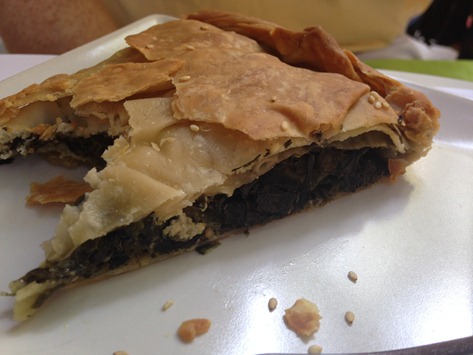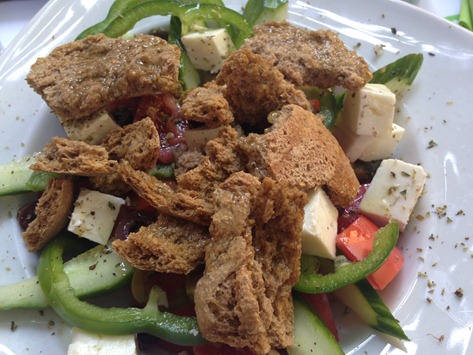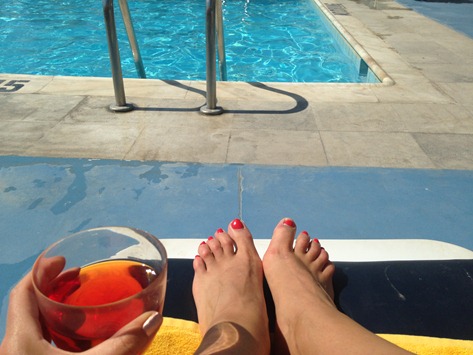Tonight’s post is the first of three travel posts, following our trip to Athens, Greece. We both loved the city and hope to return sooner versus later, especially if it is on our way to tour the Greek Isles! Now, I’ll turn it over to Bo, for tonight’s post.
Since our Athens visit was partially a business trip for Ashley, I knew that I would have plenty of time to myself on Monday. To fill the gap, I could have relaxed by the pool, or gone to the beach, but the prospect of learning about Greek food was too alluring and thus I opted to join the Athens Walking Tours food tour. It was an incredibly fun, delicious, and educational way to spend the morning. I arrived at 9:30 at the meeting point near the Academy of Athens to find our wonderful tour guide Artemis standing with our small group. After a short wait to allow the rest of the group to arrive, Artemis began with a short explanation of what to expect on the tour, most importantly that we would be seeing the “local” Athens where the city’s residents actually do their shopping and eating.
Our first stop was a koulouri street vendor. Koulouris are to Greece as croissants are to France. They are light, slightly sweet and found everywhere. At this point in the tour, we also learned about the most common Greek breakfast and lunch – coffee and cigarettes. The random koulouri might be consumed mid-morning or mid-afternoon to supplement that healthy diet of caffeine and nicotine.
This tour helped me answer a question that has been bugging me for a while: why are Greek and Turkish cuisines so similar and what are the actual differences between the two? Koulouri is a perfect example of the similarities. There is something in Turkey that is almost identical called simit. Another example is baklava. Many Americans associate baklava with Greek restaurants though its origins are actually in Ottoman Turkey. Although Mediterranean trade dating back to antiquity helped spread and popularize various dishes, it is likely the Ottoman Empire that is responsible for the overlap between Greek, Turkish and some Middle-Eastern cuisine. After all, nearly all of modern Greece was a part of the Ottoman Empire from the mid-15th century until 1821.
Our next stop was at Kpivos for Loukoumades, a delicious Greek treat in the spirit of a beignet or a doughnut. Loukoumades are fried-dough balls or rings that are topped with honey, cinnamon and often walnuts.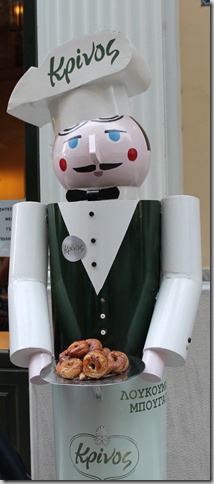
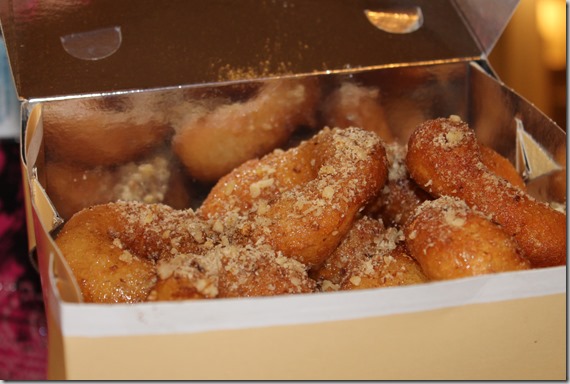
After that, it was onto my favorite experience of the tour: the Athens Central Market. I’ve been to many great markets, but I can truly say that I’ve never seen seafood this fresh in such great quantities. I’ll let the pictures speak for themselves.
Anyone need five lambs’ heads for 3 euros?
Or some pork hooves?
After the market, we stopped at a Cretan specialty store where we tried many products including olives, olive oil, tapenade, Greek yogurt, and thyme honey. We also tried Rakomelo, a delicious drink that is made by mixing honey and cinnamon with Tsipouro. Evidently in Crete, the tradition of a “vendetta” or avenging a murder by killing the guilty party still exists, hence all the knives.
We then headed to a dried meat shop where we tried more Tsipouro but on the way, we walked through a fruit and vegetable market where we sampled Halva, a nut-butter based confection that appears in many cultures throughout the world. The Greek halva that we tried was tahini-based and absolutely delicious.
Miran, the next stop on our journey is a shop that specializes in pastourma and soutzouki, two varieties of dried, cured meats that actually have origins in Armenia rather than Greece. The décor in particular was incredible with hundreds of dried meats hanging from the ceiling. Here we also tried more tsipouro and learned the origin of the liquor as well as the difference between it, Turkish Raki, and Greek Ouzo. Tsipouro is a grape-based liquor which is very similar to the more well-known Italian liquor, grappa. The Turks loved tsipouro but wanted a bit of a difference flavor so they added anise essential oils and created raki. The Greeks, in turn, added a bit of sugar and created ouzo. This perfectly illustrates how the two cuisines have influenced each other over time.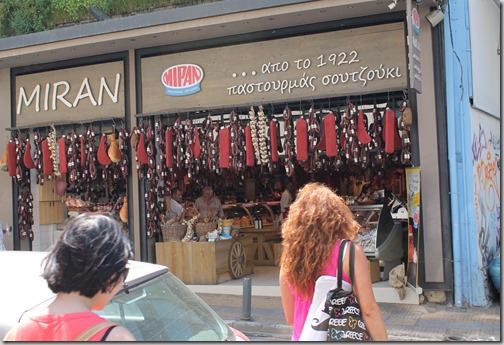
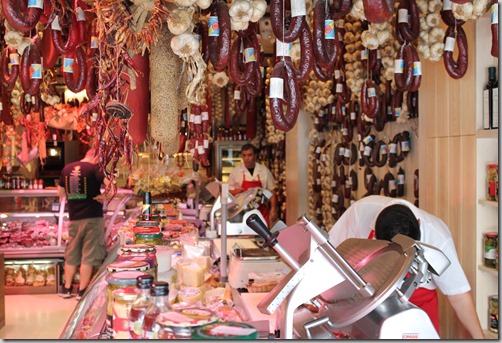
Our second to last stop was a spice store where we sampled mastic, also known as the “tears of Chios” after the island in the Mediterranean where mastic trees are grown. Our final stop was a bougatsa shop where we sampled both savory and sweet versions of the filo dough based delicacy.
Overall, the experience was wonderful, our guide was fantastic and I would recommend this to anyone who is visiting Athens.
Have you taken a food tour before? Which city would you most want to experience through food?


